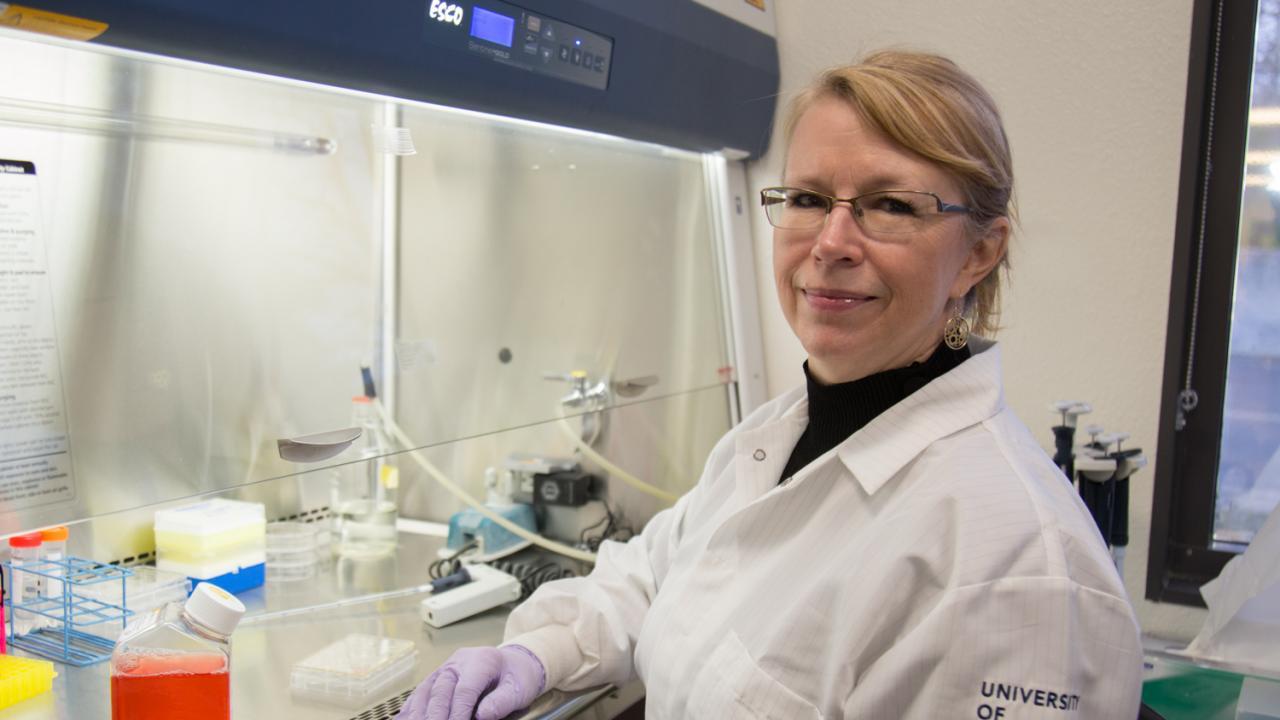
Researchers Identify a Potentially Safer Approach to Opioid Drug Development
New breakthrough in opioid research may reduce the potential for opioid abuse and overdose
Opioids are powerful painkillers but their use is hindered because patients become tolerant to them, requiring higher and higher doses, and overdoses can cause respiratory depression and death. A recent study from researchers at the UC Davis Center for Neuroscience contradicts existing thinking about how opioid drugs cause tolerance and respiratory depression, and suggests a new, balanced approach to developing safer analgesics. The work was published July 13 in Neuropsychopharmacology.
“The holy grail of opioid research is to determine the ideal properties of an opioid analgesic for maximizing pain relief while reducing the adverse side effects,” said Jennifer Whistler, senior author on the paper and professor of physiology and membrane biology in the UC Davis School of Medicine. “This goal has become even more urgent in light of the devastation wreaked by the opioid overdose crises and the failure to identify other non-opioid targets for the treatment of severe and persistent pain.”
Whistler, who is associate director of the UC Davis Center for Neuroscience, has been researching the neurobiology of addictive disorders and their comorbidities and how to make safer opioids for more than 20 years.
A two decades long search for new opioids with fewer side effects
Opioid drugs work by connecting to the mu opioid receptor (MOR) on cells. This receptor in turn signals through G-protein and can also engage a protein called arrestin-3. The prevailing view has been that engagement of the mu opioid receptor with arrestin-3 is responsible for the two treatment-limiting side effects of opioids: the respiratory depressive effects that cause overdose death and the development of analgesic tolerance that leads to dose escalation and increased risk of addiction and overdose death.
This doctrine has led to an almost two decades-long, highly visible search for new “ultra G protein biased” opioids that potently activate G protein but do not engage arrestins.
It has also led to the investment of millions of dollars into the clinical development of these new “ultra-biased” opioids, including recently FDA-approved Oliceridine, which Whistler predicts will have a higher liability to produce tolerance and addiction than our existing opioid therapeutics.
“Contrary to the prevailing hypothesis, we have found that arrestin-3 engagement prevents analgesic tolerance and does not exacerbate respiratory depression,” said Whistler. “We used a powerful combination of genetic and pharmacological approaches to demonstrate this point.”
The Whistler Lab team challenged the prevailing hypothesis with a panel of six clinically relevant opioid drugs and mice of three distinct genotypes with varying abilities to promote morphine-mediated arrestin-3 engagement. With this genetic and pharmacological approach, they showed that arrestin-3 recruitment does not promote respiratory depression and that effective arrestin-3 engagement reduced, rather than exacerbated, the development of analgesic tolerance.
A new approach to the development of opioid therapeutics
Whistler’s data suggest an entirely new approach to the development of opioid therapeutics.
“Specifically, we propose a shift in effort to develop “balanced” opioid analgesics that strongly promote arrestin-3 engagement, much like our endogenous endorphins do,” said Whistler. “In light of both the pressing need for new analgesics and the paradigm-shifting nature of our findings, we believe the time has come to try this new approach.”
These studies suggest that future development of safer opioids should focus on identifying such “balanced” opioid ligands that recruit both G protein and arrestin-3, thereby mimicking the signaling profile of most endogenous mu-opioid receptor agonists.
“There are a plethora of biased agonists, including all the opioids we take for pain. We cannot know whether a balanced approach will lead to safer opioids, until we have a library of such molecules to test,” Whistler said.
The UC Davis Center for Neuroscience is an interdisciplinary research center dedicated to understanding brain function in health and in illness. Teams of internationally recognized scientists lead research programs on a wide range of topics at all levels of brain development, function and dysfunction. For more information, visit neuroscience.ucdavis.edu.
Co-authors on this study are Li He , Sarah W Gooding , Elinor Lewis, Lindsey C Felth, Anirudh Gaur, Jennifer L Whistler at UC Davis.
This work was supported by the National Institutes of Drug Abuse of the National Institutes of Health under award numbers R01DA019958 (JLW), R01DA037963 (JLW) and F31DA051116 (SWG). Research was also supported by the National Institute of Mental Health of the National Institutes of Health under Award Number T32MH112507 (SWG and AG) and by funds provided to JLW by the State of California through the University of California, Davis.
Media Resources
- Read the paper in Neuropsychopharmacology
